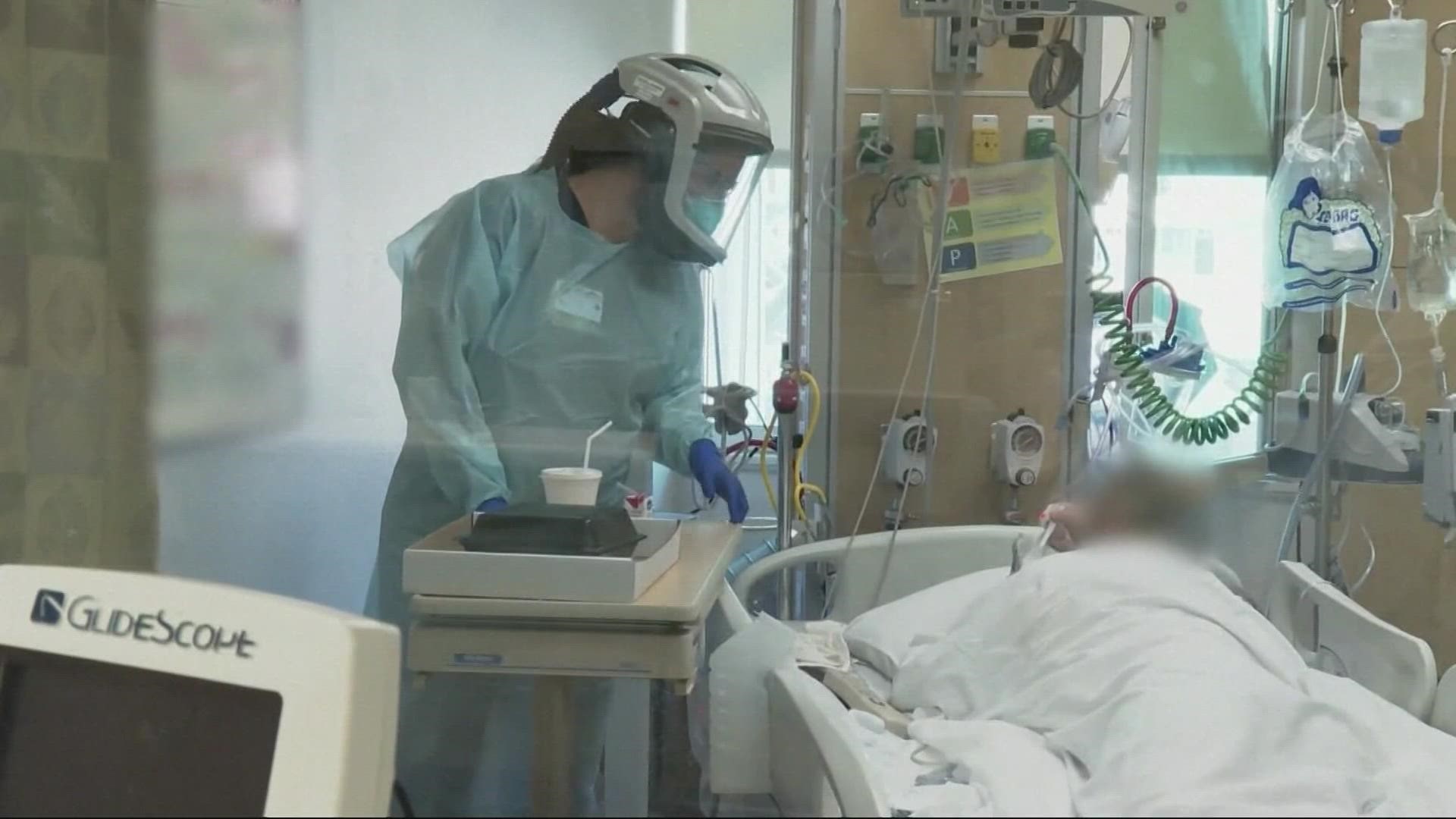SALEM, Ore. — Oregon state health officer and epidemiologist Dr. Dean Sidelinger discussed the expected trajectory of the omicron wave at a press conference Friday morning, touching on issues like hospitalization rates, testing availability and the Oregon Health Authority's ongoing development of a long-term mask rule.
The conference comes as Oregon continues to experience an unprecedented surge in cases due to the highly contagious omicron variant, which began driving case rates up in late December.
Prior to omicron, the highest single-day tally was 3,207 new cases on Aug. 27, at the peak of the delta wave. The current daily record is 10,428 cases on Jan. 6, and the 7-day average stood at 7,895 daily cases as of Thursday.
The Jan. 6 tally may have been inflated because it included some positive tests from prior days that had not yet been tallied, according to an OHA press release, but when asked about it on Friday, Sidelinger said that crossing the 10,000 daily cases mark was "not a fluke."
Oregon also reported single-day tallies above 10,000 on Jan. 14 and Jan. 20, he said, and the agency expects to again report more than 10,000 cases later on Friday.
There are some early signs that case rates in the Portland metro area have begun to level off, Sidelinger added, but they haven't started trending back down yet, and urban areas tend to be the first to peak, so much of the rest of Oregon is probably still going to see case rates increase in the coming weeks.
Hospitalization rates
Hospitalizations have also been trending steadily upward, with 981 current COVID-related hospitalizations statewide as of Thursday, according to the OHA. Omicron infections tend to be less severe, but the sheer number of cases means even a lower rate of severe illness could still break hospitalization records.
Oregon Health and Science University released an updated forecast late Thursday that projected the omicron wave would peak with 1,550 people hospitalized on Feb. 1.
That's about 100 people fewer and four days later than the previously forecasted omicron peak, but it would still eclipse the delta wave peak of 1,178 hospitalizations by a large margin.
“These increases are not sustainable," Sidelinger said.
The slightly lower peak forecast reflects the fact that Oregonians have been stepping up their efforts to slow the spread of the virus by continuing to get vaccinated, wear masks indoors and avoid large gatherings, according to Dr. Peter Graven, director of the OHSU Office of Advanced Analytics.
Mask rules
The OHA recently began the process of enacting a long-term replacement for the state's indoor masking rule, because the existing order is temporary and set to expire in early February.
Oregon law prohibits the agency from extending a temporary rule beyond 180 days unless it goes through the process of making the rule permanent, Sidelinger said, but "permanent" in this case doesn't mean forever — just until hospitalizations and other indicators recede to safe levels.
“We will look at conditions on the ground and rescind that rule in whole or in part as those conditions allow," he said.
Sidelinger was repeatedly pressed about whether the state would commit to any specific metrics for lifting the rule, but he said it was too soon to set specific numbers with the omicron wave still rising, although he anticipated being able to come up with more specific benchmarks once the omicron wave starts to recede.
“No one likes to wear masks, and all of us would like to remove them and move on," he said.
Testing access
Oregon ordered 6 million at-home testing kits in December, each of which contains two tests. Sidelinger said on Friday that the state has received just under 2 million of those kits, with another 600,000 expected in the coming days.
The initial batches were sent to hospitals, K-12 school districts and other partner agencies that need to maintain daily testing programs in order to stay open, he said, and OHA has retained about 500,000 kits on hand to resupply those agencies.
Washington State recently announced that it would set up a website to offer at-home testing kits directly to state residents, but Sidelinger said on Friday that Oregon officials have no plans to implement a similar system.
The state wants to prioritize getting tests to hospitals and schools, he said, as well as to geographic and demographic groups that have been hardest-hit by COVID or have more barriers to access testing. He also noted that individual Oregonian households can now order tests from the federal government.

